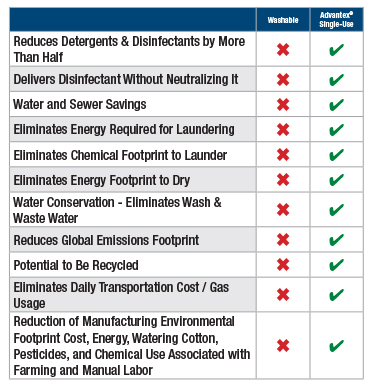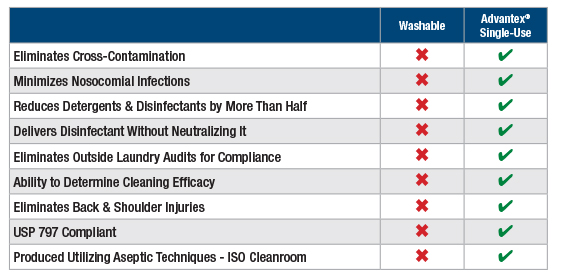Environmental Comparisons
A recent study evaluated laundered microfiber mops from eleven hospitals and found that 27.3% of the newly laundered mops contained microbial contamination, including HAI pathogens.

Key Findings
- Laundry considerations: The typical hot water temperature in the laundering process specifies 160°F-200°F for microfiber mops or cloths and excludes the use of bleach unless necessary. Bleach is required for a cold-water laundering method at
- 5-150 ppm.
- A myopic view simply focuses on waste (disposable products) going in a landfill. In reality, laundered products require transportation and a carbon footprint that includes using energy, water, and chemicals to be effective.
- Single-use mops use half the chemicals resulting in less waste and efficient cleaning. Overall, the life cycle is better for the environment than laundered mops.
Geerpres® understands the importance of environmental impact related to cleaning products; however, patient care and safety ultimately must come first.
Many hospitals are moving to single-use microfiber mops and wipes to help reduce the risk of HAIs from floor surfaces. Single-use mops remove the potential of cross-contamination with virgin microfiber in every use while eliminating the risk of efficacy degradation through microfiber structural breakdown or pathogen retainage in the mop, as a result of an inadequate laundering process.

Key Findings
- Synthetic, disposable (single-use) mops and wipes represent a minimal footprint and should be considered against the laundering process and
its waste and energy implications. - Factors to consider include single-use microfiber mops use less water and energy by eliminating the laundering cycle.
